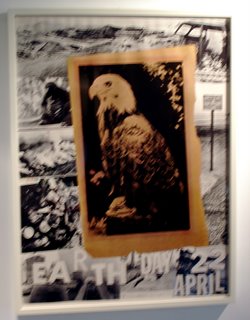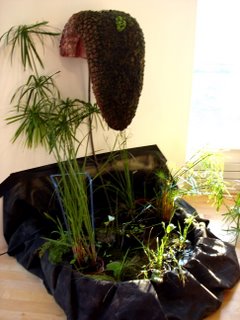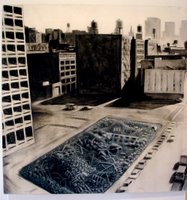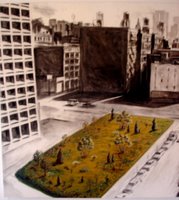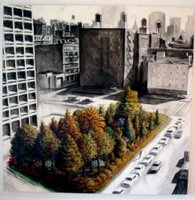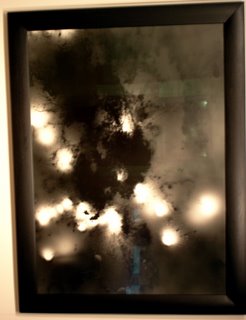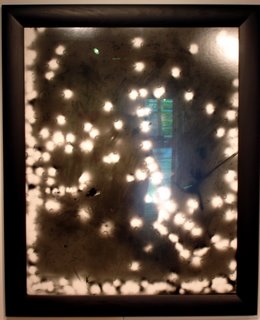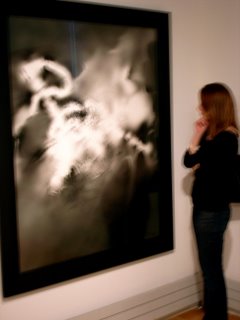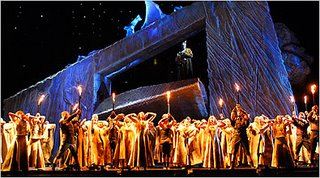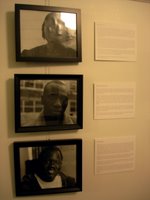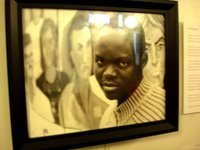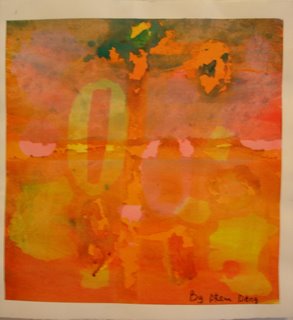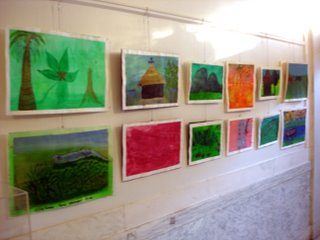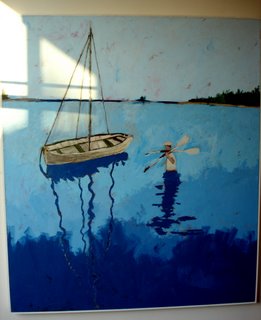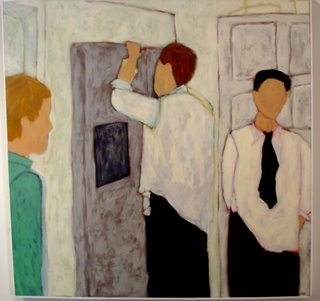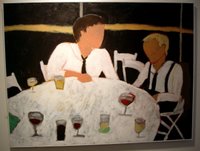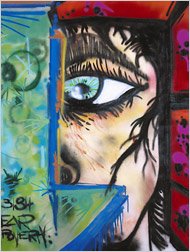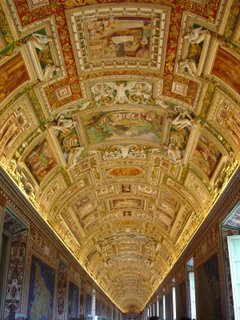What we chose to wear to certain events also adheres to a cultural code of dress: at weddings brides from a certain background will wear a white dress, in times of mourning we wear black, at graduation we're forced to wear large black robes and funny hats. These dress codes are so deeply ingrained we hesitate to give them a second thought. We embrace them without question. So it's only when you see the same manner of visual expression manifested in a very different way in a different culture that you realize the most basic idea - we're all the same (hint: I dig Claude Levi-Strauss)
At least that was what I was thinking when I went to see the opening of the new exhibition at the Fleming Museum this past Wednesday. "Colors of the Amazon: Featherworks from the Nalin and Petersen Collections," a collection of body ornaments, headdresses, costumes, baskets, musical instruments and other ceremonial objects from Amerindian tribes of the Amazon basin collected over the past thirty years by Dr. David Nalin and late UVM Professor James Petersen, an anthropologist.
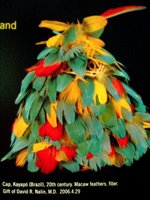 In societies without a written language, these pieces figure prominently in conveying important historical facts, myths and legends, and societal codes. The tribes represented here, the Waiwai, Karajá, Tembé, Ka'apor, Rikbaktsú, Yanomamo, Wayana-Apalai and Tapirapé, used the bright feathers of Amazonian birds such as parrots, toucans and macaws as the raw materials for bodily ornamentation. These objects are symbolic of celebration and social cohesion. It is interesting to note that the birds used are domesticated, not killed, for further use and cultivation of their feathers.
In societies without a written language, these pieces figure prominently in conveying important historical facts, myths and legends, and societal codes. The tribes represented here, the Waiwai, Karajá, Tembé, Ka'apor, Rikbaktsú, Yanomamo, Wayana-Apalai and Tapirapé, used the bright feathers of Amazonian birds such as parrots, toucans and macaws as the raw materials for bodily ornamentation. These objects are symbolic of celebration and social cohesion. It is interesting to note that the birds used are domesticated, not killed, for further use and cultivation of their feathers.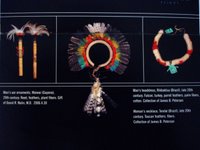 The viewer will be impressed not only by the gorgeous colors - bright and stunning, but the level of workmanship and execution that went into creating these pieces. I know we all watch "Project Runway" and wonder, "how did they create that from nothing?", but the work here is to be truly admired. One particular piece caught my eye, a "Fire Ant Ritual Mitt," an intricately and acutely geometric example of basketry modeled after the shape of a sting ray. The mitt is used in initiation ceremonies among the Wayana-Apalai. A young boy's courage is demonstrated when he sticks his hand into a mitt full of fire ants. Combs, ear decorations and the magnificent headdresses will impress viewers. The exhibit is well curated in that it also gives the viewer the cultural story and importance behind each object.
The viewer will be impressed not only by the gorgeous colors - bright and stunning, but the level of workmanship and execution that went into creating these pieces. I know we all watch "Project Runway" and wonder, "how did they create that from nothing?", but the work here is to be truly admired. One particular piece caught my eye, a "Fire Ant Ritual Mitt," an intricately and acutely geometric example of basketry modeled after the shape of a sting ray. The mitt is used in initiation ceremonies among the Wayana-Apalai. A young boy's courage is demonstrated when he sticks his hand into a mitt full of fire ants. Combs, ear decorations and the magnificent headdresses will impress viewers. The exhibit is well curated in that it also gives the viewer the cultural story and importance behind each object.The show also subtlety hints at the intrusion of the modern world into these tribes' existence. We learn that, with the introduction of trade to the region, tribe members used beads and twine from such distance places as Italy and the Czech Republic in their work. The tourist trade demanded featherworks as well for wealthy foreigners and colonialists to use as decoration. For Brazil, as UVM History Professor Ernesto Capillo says, the featherworks became "symbols of national identity complementing the process of modernization." Does that mean that through mass production these works lost meaning? Perhaps not to the people whose cultural history and identity is entwined in them, but this is a question the viewer leaves the exhibition with.
The show runs until November 19, 2006.
